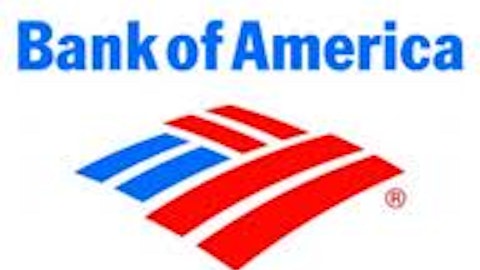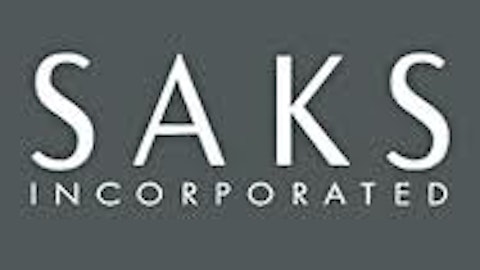
Well, at least in the cases of Bank of America Corp (NYSE:BAC), Wells Fargo & Co (NYSE:WFC) and JPMorgan Chase & Co. (NYSE:JPM) the answer is a qualified yes. Their fundamentals – the numbers behind the stratospheric figures attached to their financial activities – are for the most part reassuring if not totally stellar.
Hefty dividends and impressive price/book ratios
In selecting stocks, value investors scrutinize, among other things, the size of a company dividend. They feel confident if it is at least two-thirds the interest rate on an AAA bond; 10-year U.S. treasury bonds now return approximately 2.45%.
The dividends offered by JPMorgan Chase & Co. (NYSE:JPM) (2.3%), Bank of America Corp (NYSE:BAC) (2.1%) and Wells Fargo & Co (NYSE:WFC) (2.1%) far surpass this (two-thirds) standard when calculated as a five year average. In fact, their dividends might represent one of the major selling points that any of these three banks enjoy.
In determining its book value, the depreciation a company has accumulated is subtracted from its net asset value. Comparing a firm’s book value to its market value (its price/book ratio) can help to determine if it is overpriced. Value investors become confident when a business’ price/book value does not exceed one. This ratio is taken as being an indication it is not oversold and might even be ready for a bounce as regards its stock price.
Bank of America Corp (NYSE:BAC) has a price/book value that goes beyond that high standard: .74. And JPMorgan Chase & Co. (NYSE:JPM) has posted a figure, 1.08, which does not miss that mark by much. Only Wells Fargo & Co (NYSE:WFC)’s price/book ratio of 1.58 might raise a few eyebrows. However, looking a bit harder at some of its fundamentals, it becomes clear that these numbers might not be as concerning as they first appear.
Its forward trailing P/E ratio for the year ending on Dec. 31, 2014 is projected to be only 11.1, hardly an indication that it is seriously oversold. This figure is less than the average P/E ratio for widely based S&P 500: 15.49.
Beta: a fundamental open to interpretation
A stock’s beta measures its volatility relative to that of other stocks. If its beta is 1.00 that stock is volatile to the same degree as is the market as a whole. Any stock whose beta is lower than 1, meanwhile, fluctuates less than the market does, while stocks with betas above 1.00 are more volatile than the market is. If a stock’s beta is, for example, 1.80, it is 80% more volatile than the market.
It could be argued Bank of America Corp (NYSE:BAC) (1.92) or JPMorgan Chase & Co. (NYSE:JPM) (1.80) might make wise choices because their betas are relatively high, allowing for upward swings.
But then again, the fact that Wells Fargo & Co (NYSE:WFC)’s comparable figure (1.07) is relatively low might work to its definite advantage. Although it might not enjoy the same upward spiral that some (more volatile) stocks do, it might be less likely to migrate downward in unpredictable ways.
There are no firm guidelines to follow in making such decisions. And the point should be made that a stock could have a relatively low beta and still fluctuate a great deal. That would happen if the market as a whole is experiencing some serious gyrations.
A Foolish conclusion
JPMorgan Chase & Co. (NYSE:JPM), Bank of America Corp (NYSE:BAC) and Wells Fargo & Co (NYSE:WFC) post fundamentals that seemingly would make them a good bet for investors. Their dividends are at a satisfactory level, providing a higher return than investors would gain if they simply put their funds into money markets. And for the most part, their price/book ratios are acceptable. Their betas, while in some cases relatively high, do not necessarily send up warning signs as some investors might want the volatility that these numbers reflect.
However, a warning is in order. These three banks might not be the totally safe bet that some people would like to envision them as being, or figure that they once were in a more predicable economic environment.
How could these banks – JPMorgan Chase & Co. (NYSE:JPM), Bank of America Corp (NYSE:BAC) and Wells Fargo & Co (NYSE:WFC) – or any other financial institution for that matter, be rock solid in today’s world? Economic markets can easily be rattled by interest rate hikes on the part of the Federal Reserve. For that matter even the hint that such moves might be planned can have a strong impact on them. And essentially unpredictable events in developing countries, such as China, can be equally as unsettling.
The article How the Numbers Behind the Numbers Tell the Real Story For These Banks originally appeared on Fool.com and is written by Harriet Tramer.
Harriet Tramer Tramer has no position in any stocks mentioned. The Motley Fool recommends Bank of America and Wells Fargo. The Motley Fool owns shares of Bank of America, JPMorgan Chase & Co (NYSE:JPM)., and Wells Fargo. Harriet is a member of The Motley Fool Blog Network — entries represent the personal opinion of the blogger and are not formally edited.
Copyright © 1995 – 2013 The Motley Fool, LLC. All rights reserved. The Motley Fool has a disclosure policy.




